Data is everywhere – it propels business growth. You can utilize your data to better understand your target market and make smarter decisions, but what happens if this information changes or is missing key details?
“ No data is clean, but most is useful.“
-Dean Abbott, Co-founder and Chief Data Scientist at SmarterHQ
That’s where the data decay phenomenon starts to kick in.
Your initial input is likely accurate, goes through checks and balances, and enters your database. Initially, this information meets your needs, but there’s one thing every business owner knows: change occurs rapidly.
We’re going to shed light on:
But let’s start with a simple question:
Note: Data decay phenomenon is not data degradation. Degradation of data occurs on storage devices when non-critical errors arise. You may even see this called rot or digital decay, but for the purpose of this article, it’s not the same.
So, what is digital data decay?
It’s the quality of data decreasing over time. Accurate data can, over time, become:
If you’re trying to make decisions based on old conversion rate data, you may make choices that harm your sales. Of course, data goes well beyond just lead data and can impact every facet of your operation.
Understanding the cause of decay is your first step to rectifying it.
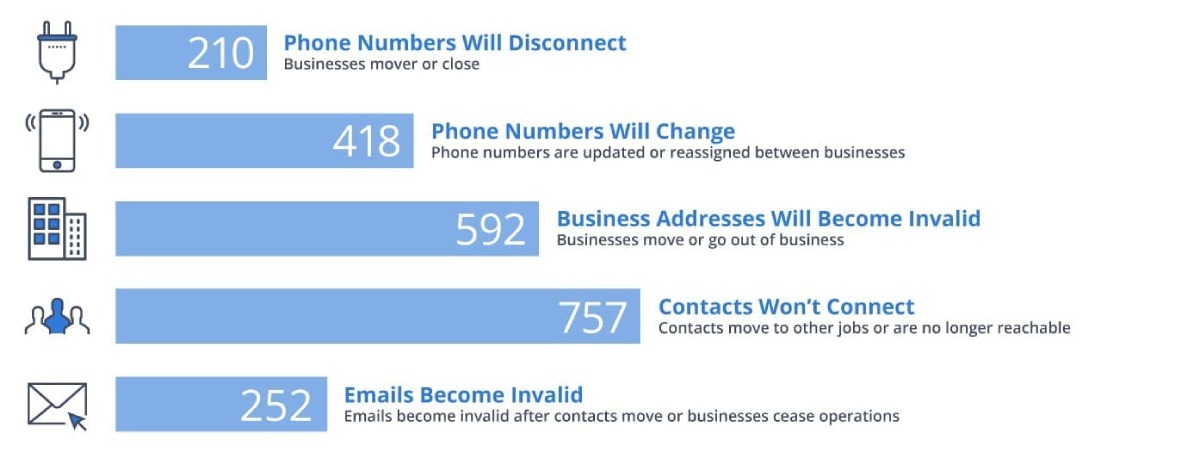
Image source dealsignal.com
Information changes extremely fast, and data decay statistics show a rate of 2.1% decay per month. Imagine if you have a database with 100,000 rows of information. You would lose 2,100 rows to decay of some degree.
This figure rises to nearly 25,000 over the year.
Decay can occur due to:
Employees or systems can also input or update data inaccurately, causing a rapid decline in data quality.
Data decay phenomenon occurs – we’ve established that – but what type of impact does that have on businesses? Data decay statistics show the following:
B2B and B2C companies are impacted by the data decay phenomenon in many ways:
Even your form analytics data can decay, but there’s one thing we want to make clear: decay is inevitable. You cannot avoid digital decay, but you can do your best to slow its rate.
Most businesses know about #datadecay – what they overlook is the fact that data in their #CRM decays at a rate of about 30% annually. Can you imagine how much #baddata is costing your business? Download the infographic for more data decay related facts.https://t.co/gG1CQ8MGaK pic.twitter.com/GNOFBjH2xI
— CloudLead.co (@CloudLeadCo) July 18, 2018
Why does your data decay? There’s no simple answer. Natural decay happens, such as a business switching addresses or revenue falling below what you have in your database.
However, the most common challenges you’ll experience with your data are:
Contact information changes far more rapidly than most businesses realize. For example:
Data trends can be inaccurate due to missing or incomplete data. If someone fills a form and puts N/A or leaves fields blank, it causes massive data decay rates across datasets.
Start-ups change overnight. Data in these organizations often decay fast because small internal changes can disrupt who your target market is today and who it will include tomorrow.
Data can be unreliable from the start. Companies often purchase lead datasets that haven’t been checked and verified. Old databases will become obsolete and inaccurate on their own, or entry can be inaccurate.
Data hoarding is an issue. Companies may hold onto data for years, leading to wild inaccuracies of over 50% – sometimes much higher. Archiving data or refreshing it can help you reduce wasted resources or bad decision-making.
Due to the high rate of employment changes (30% per year), job role and responsibility data can decay. Someone may be in a junior position in your database but is now in a senior position in a different department. When trying to reach decision-makers, data decay of these prospects can cause significant resource loss.
Last year, 50,000 mergers and acquisitions were completed. Drastic shifts afterward can lead to a significant data decay rate because departments can be combined, workforces trimmed, offices closed and more.
The phenomenon of data decay happens – a lot – and it’s up to your internal processes and procedures to find a way to rectify this issue. You can combat digital decay, not 100% of the time, but enough to be confident that you can leverage the data to make better decisions throughout your organization.
What can you do to improve data quality?
Below are strategies that you can deploy to slow your data decay rate across datasets.
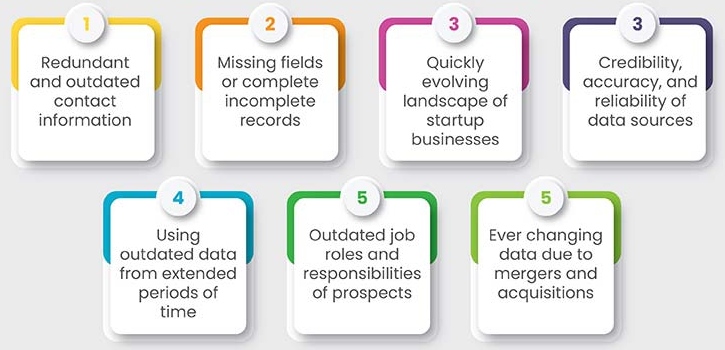
Image source hitechbpo.com
Fixing digital decay is an ongoing process, but the strategies below will help you make a meaningful impact.
You have existing data that has errors – it’s almost impossible to avoid. Datasets increase in size rapidly, and if you’re not cleaning this data, it’s going to become worse over time and lead to digital decay. You can start by:
Most databases have easy commands that you can run to find and delete duplicate rows. In SQL, you can use “SELECT DISTINCT” to retrieve only unique rows, or you can run a sophisticated GROUP BY command to remove the data duplicates and by this decreases the rates of data decay
Work with IT to remove duplicate data before moving to the next strategy.
Irrelevant data wastes employee time. If data isn’t relevant to workers, it will lead to wasted time spent on making sense of information that does not make sense.
Is your data formatted consistently? If not, you won’t be able to extract it to use in reports and decision-making. You’ll need to remove excess characters, symbols, spaces, tabs, and any other formatting issues that are impacting your digital decay.
Duplication can occur due to capitalization issues. To improve data decay statistics, put policies in place to maintain capitalization across fields. Whether you use lower, upper, title, or another case, be sure that it’s consistent.
If a number is added to a database, force it to be a number rather than a string to make it easier to compare data.
Finally, work on fixing errors in your data, such as inaccurate spellings, stats, addresses, and anything else impacting accuracy and digital decay.

Image source hitechbpo.com
While data continues to be acquired, it’s crucial to prevent data decay with the help of enrichment. You can reduce decay when acquiring large datasets through:
Who supplies your data sources? Are they reliable? You need to perform your due diligence to verify that data sources are accurate and utilize the same strategies outlined in this article.
Information goes stale quickly. Data should be fed into automated systems so that your organization can use it in real-time with little-to-no delay.
Data decay phenomenon from a single source is easy to miss because you can’t compare it to other sources. If you capture data from multiple areas, you can verify data against each other and find discrepancies before they have a negative impact on your operations.
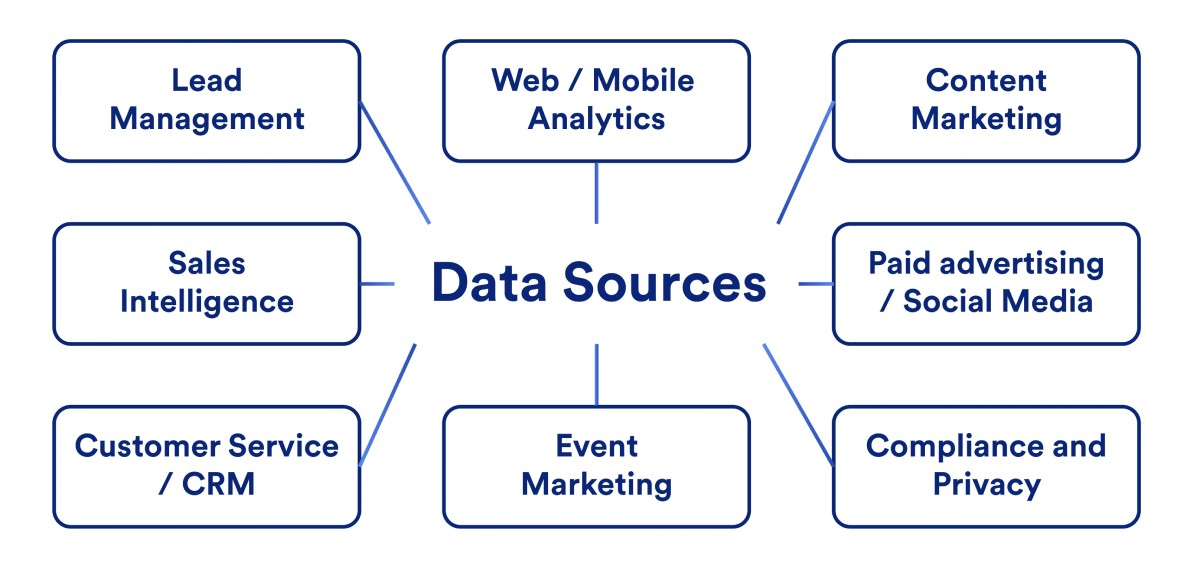
Image source moengage.com
Data comes from many sources, and you need a way to parse and use it properly. For example, you need to use data from:
● Social media
● Blog posts
● Repositories
● Data archives
● Etc.
Comprehensive inputs with validation can help keep data fresh and reduce the risk of the data decay phenomenon.
Missing data, a critical aspect of data decay statistics, skews your data and impacts decision-making. Append missing data fields to ensure you provide your employees with information that is 100% accurate, complete, and helpful. Otherwise, employees may spend unnecessary time trying to track down key data points. The statistics of data decay highlight the importance of addressing missing data promptly to maintain data integrity and utility.
Create (if you haven’t already) and enrich your customer profiles. You can do this by:
● Adding new information
● Filling in missing records
● Building more information on pain points, behaviors and more
A thorough data maintenance plan and regular data cleansing will help ensure that your data is always fresh and accurate and will lower your data decay risks. Effective data maintenance and cleansing strategies include:
Ensure that you’re conducting regular audits and data updates to keep your data clean. There are several solutions that can assist with these processes, such as social media listening tools.
Preventing data decay phenomenon should start at the point of data collection. Validation and verification processes can help ensure that the data you gather is accurate and up-to-date right from the start.
Make sure that you take steps to implement data validation techniques right into your forms.
Automated data cleansing tools can save time and reduce the risk of human error. Consider customized tools that use advanced algorithms to cleanse your data.
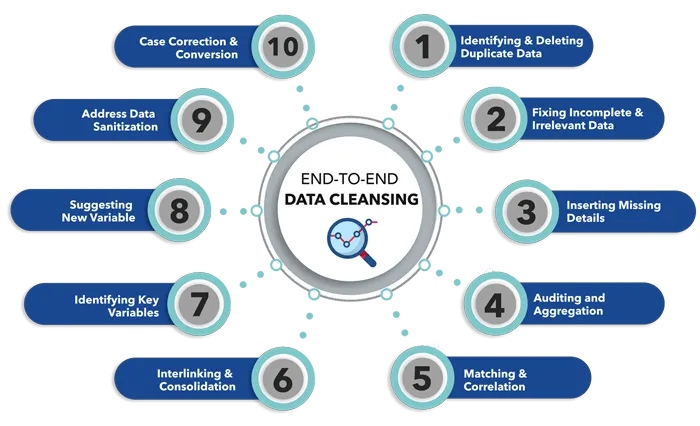
Image source astera.com
Effective data governance measures and analytics can help prevent the phenomenon of data decay. Here’s how:
To preserve data accuracy, it’s crucial to implement quality standards and protocols, such as rules for data completeness and validation. These protocols and standards will ensure data relevancy and consistency to reduce the risk of data decay over time.
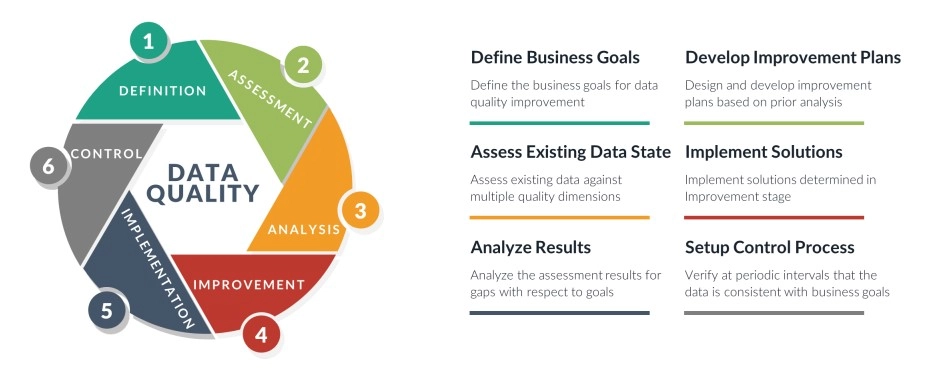
Image source estuary.dev
To protect the integrity of your data, assign data ownership to departments within your organization. Those responsible for the data will be in charge of monitoring, validating and updating data, and it will be in their best interests to be good stewards of data management.
Implementing data governance measures and complying with data protection regulations will help ensure data privacy and security. While there’s no surefire way to prevent breaches, using the best practices and solutions for data security can help minimize risks.
A secure data environment can help prevent malicious actors from tampering with your data and compromising its integrity.
If you want to prevent digital data decay, you must develop and adopt a comprehensive data hygiene strategy that involves:
These processes will remove duplicate records and correct inaccuracies to ensure that your data is always fresh and high-quality.
Data silos are great for isolating data in different systems, but they can also make data acquisition more challenging. Improving data silo management can minimize the risk of decay and help provide a holistic understanding of data.
Data analytics can be a useful tool for identifying decay patterns and allow you to proactively detect outdated data. However, it’s important to ensure that you have a system in place to address issues that can affect data quality during collection and retention.
It is crucial to ensure that you’re monitoring data quality and performance regularly. Focus on important metrics, like accuracy, relevance and updates to identify potential risks quickly. Continuous monitoring will ensure that your data is reliable and accurate.
“ Data that isn’t organized clearly or stored properly can be just as useless as data that is simply incorrect or out of date. creating this clarity in a business setting should be centered around uniform, well-publicized practices. If everyone in a given company is viewing, inputting, editing, and removing data using the same processes, and contributing to maintaining databases in a specific, pre-determined way, your data is going to be infinitely more useful than it would be if you deploy a scattergun approach.“
-Aaron Drapkin, Lead Writer, Tech.co
Smart marketing automation management and CRM integration can help combat data decay. Effective strategies include:
Automation tools can synchronize data across all departments to ensure that it’s always up-to-date and accurate. From sending email messages to customers to updating customer contact information in your CRM system, automated tools can save time and streamline data updates.
To ensure your data is always fresh and updated and to decrease the data decay rate, integrate your CRM system with your marketing tools, analytics solutions, and other tools.
Automation can help ensure that your customer data is always up-to-date and accurate. When your data is accurate, you can create a more personalized marketing to make your lead nurturing process more effective.
The business landscape is constantly evolving, and data evolves along with it. If your business is relying on outdated data, the consequences can be serious and can cause high data decay rates.
Stalled growth and poor customer satisfaction are just two of the many negative consequences poor-quality data can have on your business.
Other risks include:
Customer behavior and preferences can change in the blink of an eye and result in high rates of data decay. If your data is outdated, you will make decisions based on inaccurate customer insights.
When your insights and segmentation are inaccurate, your ability to deliver personalized, tailored customer experiences will be compromised.
If your marketing messages and communication aren’t resonating with your customers, the sales, loyalty and overall customer satisfaction will suffer.
If you’re relying on outdated data, your lead generation and nurturing campaigns will be less effective and efficient. Your targeted content, newsletters, webinars and other content may no longer touch on your audience’s pain points or resonate with them.
Inaccurate data will make it especially challenging to identify quality leads and nurture your customers throughout the buyer’s journey.
One of the biggest risks of relying on outdated data is that you’ll wind up wasting your marketing resources and efforts. Data decay statistics show that if you cannot target your audience effectively, you will end up wasting ad dollars, reducing engagement, and losing valuable opportunities.
When your data is outdated, you lose sight of your customers and their needs and preferences. It then becomes challenging to deliver the personalized experiences that your target audience craves. When your communication and messaging are no longer relevant to your audience, it can lead to poor customer satisfaction and retention.
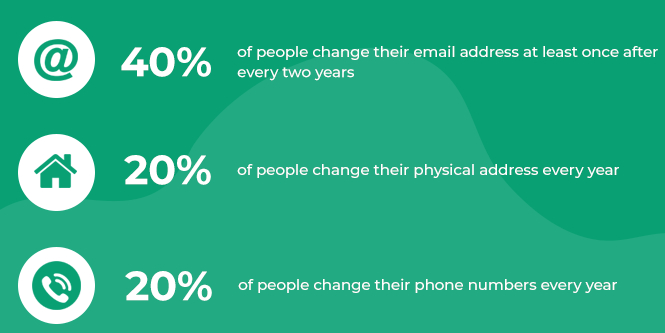
Image source outrightcrm.com
The quality of your data can play an important role in driving growth for your business. Along with helping you target your audience more efficiently, being critical data decay statistics, accurate data can help you make smarter decisions, create more personalized experiences and better measure the ROI of your marketing campaigns.
High-quality, accurate data will help ensure that your leads are also high-quality, which will drive growth and help you maintain a competitive advantage. It also means that you’re targeting real prospects who are more likely to convert – and that will drive more revenue.
Business decisions should be backed by reliable, accurate data. When your data is out-of-date, you may make poor decisions that can have disastrous consequences and lead to data decay.
But when your data is accurate and high-quality, you can:
Identify new opportunities for growth and expansion
Enhance efficiency and reduce costs
Improve processes across all operations
High-quality, accurate data empowers your business to track the results of your marketing campaigns, including:
These metrics help you measure the ROI of your marketing campaigns more effectively, optimize your strategies and determine which channels are most effective for your business.
High-quality data can help you get to know your customers and create more personalized messages that resonate with them. Today’s consumers (71%) expect personalized interactions, and they get frustrated if they don’t receive them and this directly impacts data decay statistics.
Data can help you meet and even exceed their expectations by creating tailored marketing messages based on their:
Creating more personalized experiences can help increase conversion rates, build trust and, ultimately, propel business growth.
Data decay phenomenon is a challenge faced by every modern business, but the tips and strategies outlined above can help you combat the issue. By taking steps to improve your data quality and accuracy, you can propel growth and build a sustainable business that your audience trusts.